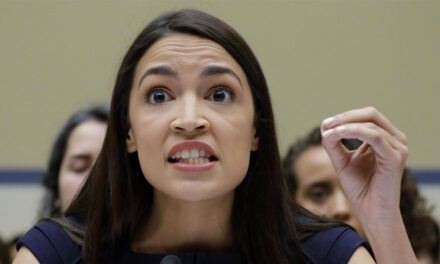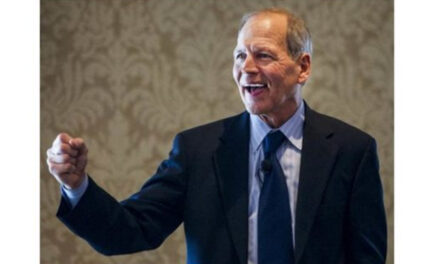
Auto union about to wreck American car industry … again

Getting a handle on the average wage of an auto worker is an arduous task since different tabulators use different methods. But most come up in the same range. CBS News reported the number at around $50,000 per year. The Bureau of Labor Statistics (BLS) has two reports. Its Occupational Employment Statistics report puts the number at $46,900. The BLS’ Current Employment Statistics Report places the number and around $55,000. In addition to wages, autoworkers enjoy some of the best – and most expensive – benefits.
The United Auto Workers Union is demanding an unprecedented 40 percent increase. The automakers have offered 20 Percent. Any worker in America would see a 40 percent increase in pay as a lot. Using the current pay at $50,000 per year, a 40 percent increase would put the new pay at $70,000. A 20 percent increase would increase the average annual wage to $60,500. The smaller increase is more than the inflation rate. That means it would be a positive gain for the worker.
But wait! The UAW wants a drop in the work week from 40 hours to 32 hours. That is essentially a full day off. That moves the hourly pay from around $28 today to approximately $43. That would be closer to a 65 percent increase in the hourly pay.
With the negotiations at an impasse, the UAW has gone on strike against the three major American automakers. In this case it is what they call a “stand-up” strike. That means they only strike one facility of each of the automakers – with the option to expand the strike.
In announcing the strike, UAW President Shawn Fain took an unusually combative tone – even for a union leader on strike. He called the negotiations a “defining moment” and a “generational fight” –and called for picketing, rallies and protests by members and others.
We can all agree that the auto workers deserve an increase in pay – a reasonable increase, that is. We should all be able to agree that a 40 percent increase is NOT reasonable.
In considering the UAW demands, we need to not only look at the benefit to the worker, but to the impact of a large pay increase on the economy in general and the American auto industry specifically.
The kind of increase in wages and benefits the UAW is demanding would add to inflation. Keep in mind that the Federal Reserve is trying to avoid a recession by decreasing the amount of money flowing around the economy.
In previous interviews, Fain complained that American autoworkers do not make enough money to purchase American cars. They have to buy foreign vehicles, he says. While the autoworkers may be getting more money, the cost of the American cars will increase more than the foreign alternatives. Foreign vehicles will still have a price advantage.
In fact, that is exactly what happened in the past. Starting in the 1960s, the autoworkers were enjoying big contractual pay increases. At the time, the UAW was bragging about having some of the highest paid industrial workers in America. The wage increases were so big that they increased the cost of American cars – creating the opportunity for the foreign imports to flood the market. The excessive wage increases of yore also made it economically feasible for automakers to invest in job-killing robotics and to shift sources and operations to nations with lower labor costs. In a very real sense, the unions killed the geese that were laying the golden eggs.
Ford CEO James Farley said that the 40 percent wage increase would bankrupt the Company in a few years. I doubt that. What I believe would happen is what happened in the past. Automakers would move their operations overseas.
In its public relations strategies, the UAW is pointing to the very high compensation packages enjoyed by the senior management. I have been a longtime critic of the excessive compensation packages enjoyed by the major corporate officers, but that is a separate issue. Yes, it is good to get the working class pissed off – as we should be – but it does not have any significant importance in the economics of a general wage settlement.
We will have to wait and see how long this strike lasts – and what the final agreement looks like. Unless the UAW becomes more reasonable in its demands, the strike could go on for a while – and that would also be bad news for the economy. Some estimates indicate a $5.6 billion Gross Domestic Product (GDP) loss. It would most certainly drive-up inflation – and make a future recession more likely or more serious.
The best outcome for all concerned would be a short strike and a wage settlement in the neighborhood of … let’s say … 20 percent based on a 40-hour work week.
So, there ‘tis.





























The auto makers should hire scabs. The union demands are mostly unrealistic. They are pricing themselves out of work. 40% pay increase while earning around $60.00 per hour? 32 hour work week? I would starve back to work
I think Horist is hyperventilating a bit when he says: “UNION ABOUT TO WRECK AMERICAN CAR INDUSTRY … AGAIN,”
How about Union makes US Auto Industry competitive again. Or Union establishes wage benchmark for foreign maker factories in American without even asking for a “thank you.” From the party that will close down the government in a heartbeat over things not budget related, the party that stalls all military confirmations because one guy no like, here they go again…..
My entire career I lobbied co-workers for white-collar-unions getting little support from a breed of worker that would never talk about salaries, rights, benefits, as all got eroded as mahogany row got out-of-site raise increases. We watched as healthcare insurance cost us 10% more each year as I went from fully covered for hardly any premium to high premiums, high co-pays, equaling 10% more from me every year. After a few years, that really hurts, but no one wants to organize in the white-collar business world. Nor did I have an overwhelming passion as I lobbied but did not do more instead choosing to protect my family. Also, I made more money than most, if not all, in the shop at my level, so….. My sibling worked for the state, white collar, and was a teamster. And yes, they protected them when in a dispute. The Union had their back.
The Irish side of my family worked the trains (union), restaurant ((union), the Slavic side worked the mines (union), and owned a small business (no union) so mostly a union family until my parents, GI bill, went white collar. And while no Union, my father worked white collar on contract, and the contract was very good, multi-year, and iron-clad. Wish I had one. He almost never worked past 5 pm. I almost never left at 5pm. He started at 9am, I started at 8 am. Yeah, a Union would have been great.
I think Horist is wrong about destruction of an industry that the Unions helped create. I think he’s wrong about it being abnormal, unprecedented, and is just looking with preconceived notions and Republican urban myths. Clearly still the party that cares more for Blacks in the 1860’s, than factory workers today. More against LGBTQ than for the Union.
I would give great pay and benefits. But go peddle your union elsewhere I’ve had a bad experience with a union and we were screwed out of our jobs because of the lies of the international union and local leaders. A I’ve seen some really bad employees that the company couldn’t get rid of. And one guy was dangerous and assaulted people on the job. He assaulted me. I kicked his ass and the union let them punish me. He threw the first punch. I got suspended without pay because that bastard was connected.
Frank Stetson … you are a union romantic and dodging the facts. Why do you think foreign cars competed in American and manufactures took jobs and factories to foreign nations. Why all the robotics. UAW wage and benefits make American cars uncompetitive … period. And in 2022, only 6 percent of all private sector jobs were unionized — the lowest ever recorded. Your rambling (as usual) rant is factless.
Mr Horist: I do not understand your anger and defensive stance. Please don’t take things so personally, they are not meant that way.
“Your rambling (as usual) rant is fact-less.” You are correct, it was an anecdote and my opinion. Are you really saying my opinion is wrong?
As to your dithering’s; let’s let facts be our friends, once again:
1. Foreign manufacturers entered the US market because a) we are the second largest market in the world, china has surpassed us. 2) they had less expensive products with better mpg’s. 3) thought they had good product 4) in time, they did, but not at the beginning. (can source if you really need me to show you the obvious)
2. US manufacturers moved overseas for a number of reasons from lower labor costs to in-country advantages like those that bring foreign mfg to the US where you know it’s not about labor costs. (ditto)
3. UAW costs do make it interesting, but you are factually wrong about non competitive. (see below)
4. Robotics —- really? Perhaps cost? Sure, Unions play into that, but gee—– do you think low cost countries don’t use robotics?
5. Yes, Unions are going away, and sometimes when needed, like white collar, they can’t even get started. More’s the pitty, but that’s life. My kids target jobs requiring either professional credentials or have industry professional organizations, or both. IMO, they are the new white collar union alternatives serving similar functions. As I noted, some state white collar are teamsters. (opinion)
I think your “private sector” view of unions is a bit of a spin. May be accurate, but spinful. The topic was Unions or UAW, not private sector Unions only. In response, try the BLS: “The union membership rate—the percent of wage and salary workers who were members of unions— was 10.1 percent in 2022, down from 10.3 percent in 2021, the U.S. Bureau of Labor Statistics reported today. The number of wage and salary workers belonging to unions, at 14.3 million in 2022, increased by 273,000, or 1.9 percent, from 2021. However, the total number of wage and salary workers grew by 5.3 million (mostly among nonunion workers), or 3.9 percent. This disproportionately large increase in the number of total wage and salary employment compared with the increase in the number of union members led to a decrease in the union membership rate. The 2022 unionization rate (10.1 percent) is the lowest on record. In 1983, the first year where comparable union data are available, the union membership rate was 20.1 percent and there were 17.7 million union workers.” Yes, it’s tough, shrinking, and up against the wall, but still 10% which is enough to matter. And while the % is lowest ever, the number of members did increase. They just need a recession to look like they are growing like crazy (just kidding, but true). And trust me, the Union effect on wages is felt far beyond the Union’s reach. We thank our military for their service, I thank the Union too.
“Your rambling (as usual) rant is fact-less.”To your major point, not proven with facts, that “UAW wage and benefits make American cars uncompetitive … period.”
The top three US automakers hold over 42% of US market share proving they are competitive.
The top three US automakers come in 4th, 5th, and 6th, in the world proving they are competitive. Ford was up 7% in 22 passing Honda and Nissan. Tesla is 15th.
Period?
Hope that you are illuminated and not just angry again.
Poor DANO, the world is against him and they always win. Then again, he claims he does not follow Democrat laws, leaders, but is too chicken-shit to list specifics. As his anonymous self might get arrested anonymously. No the Union has attacked him without provocation because he choose self defense. Seems that violence is his best and only defense. Words elude him.
Your bad experience with unions seems appropriate. My entire family for three generations has seen the benefits.
Words mean nothing when the assault is physical. You stupid prick And some of the shit I did was acting as a union thug
Good to admit you are a thug, but not sure how that’s being an outlaw breaking rules, regulations, and laws created by Democratic leaders than you have pledged not to follow or obey. Aren’t Unions favored by the Democrats?
Of course if you are defending yourself, words might mean little. It’s before the fists fly. And I am not a stupid prick: I have degrees to prove it, unlike you probably.
Still waiting for you to support your claim of being an outlaw breaking laws created by Democrats. I know —- you refuse to take Social Security you rascal. Turn down Medicare too, right?
Just so you know. I have a college degree and I can even read music. And I’ve had many hours of reeducation training in my field. So I’m not sure what that has to do with anything. Lots of people have gotten good education and still have no common sense. I’m that way sometimes.
You seem confused: Trump University does not count… And college education folk may not have common sense, but on average, they do have more money.. I just want to know what Democratic laws you went outlaw on as you were defending Democrats as a Union Thug. Sounds to me that you work more for Dems than for conservatives and you lied about your outlaw life, just another brutish dumb thug. For money no doubt, or was it to support the movement?
Once upon a time I was a democrat. But I finally saw them for what they were becoming back then and now they have arrived. In the words of president Reagan, I didn’t leave them they left me. As for money I ain’t for sale. I’ve done good in life. And sorry Frank. I never attended trump university. But it’s true. I do have a degree. And I didn’t expect the tax payers to absorb my cost The music thing that I mentioned earlier was a few years of private lessons. But it’s also a money maker. Just so you know. You’re not doing very well at bullying me. It’s not working
Sorry folks, I just can’t scrap the Tyree off my shoes…… back on point……
As Horist notes, wages calculated differently by everyone. Average US wage by FORBES is $59,428 in 2023; median income in US in 2021 was 70,784. Average pay based on education is 40k hs, 72K ba/bs, and 77k for graduate. Add a lot for places like CA, NJ, and the Northeast. Subtract for the South although non-Union auto factories down there do about the same as Detroit, some a bit higher, some a bit less, mostly less. Yes, they deserve a raise, but undoubtedly foreign factory wages are affected my Union wages as well; they certainly seem higher that other Southern factories.
Horist says: “The United Auto Workers Union is demanding an unprecedented 40 percent increase.” Horist leaves out, and never mentions, this is over 4 years. “We should all be able to agree that a 40 percent increase is NOT reasonable.” Apparently not, and some lead by example, but Horist can’t be bothered to look outside his paradigm that Union’s bad.
The CEO’s at the Big Three have seen a 40% increase in their salary over the past ten years. Autoworkers’ real hourly earnings have fallen 19.3% in the past five years according to the Economic Policy Institute (EPI). Profits are up 90A% over the same ten years. FYI: EPI is pro-Union 501c. But clearly, 40% is not unprecedented in the industry.
From NPR: “In recent months, workers across industries have fought for — and, in a handful of cases, won — around 50% wage increases over the next four to five years, as they call out years of stagnant wages and robust company profits.”
“After months of contentious negotiations that led 340,000 UPS workers to the brink of a strike, the Teamsters union in July secured a 48% average total wage increase.”
“In August, the Allied Pilots Association, which represents 15,000 American Airlines pilots, successfully pressured the airlines to increase pilots’ pay by more than 46% over four years, with an immediate pay raise of more than 21%.”
Clearly, 40% over four years given what the UAW has given up for the pandemic, and The Great Recession in 2008, is not unreasonable and has been seen quite a few times in recent times. Horist seems a bit harsh in his partisan hatred of Unions. And his opinion is, at times, wrong on the facts. Not BUSTED though, IMO.
The 4-day work week seems a toss-away IMO. An easy one to give up OR let them have it, unpaid. The 40%, according to Union Prez Fain, is high too. Obviously, 20% is too low according to the Union.
As Horist indicates, the strike is limited now, only three plants, more for show than stoppage. They want to talk, but they mean positive talks because strike expansion always possible. However, Horist is not right that increased wages mean increased prices. That’s just Republican shallow thinking. Did he look at the profits? There’s plenty of room. Fact is there is a possible connection, but not even a correlation for this across markets. In business, with a union, for decades and gave many a raise but never raised prices because of it. Never, and I managed sales of hundreds of billions worth of stuff over the decades. Anectdotal for sure, but Horist has no proof that increased costs are a direct line to increased price. It may work for the simple-minded, it’s an ez song to dance to, but there is no proof, and certainly not a 100% possibility.
That said, my guess is 30%; they have already turned 20% down, as they should. Or tighten it to 2 years. And God bless them for cranking out some really great vehicles. My 1999 Ford looks and runs like new.
PS: is the entire Horist family in the room for thisi? Larry has more “we’s” issued that Ned Beatty in Deliverance. We this, we that we we everywe. Seem to recall him slamming me for that….. But it’s nice Horist has friends, imaginar we’s at least.
I must go take a Frank and wipe my Biden
Frank Stetson … LMAO Your petty (as usual) , childish (as usual) and ignorant (as usual) contrarian obsession with your imaginary Larry Horist is getting the best of you. You say I have no proof that increased costs result in increased prices. You either never ran a business … or just devoid of common knowledge and common sense … or are just suffering the mental affects of aging. I guess you would need proof that the earth is round. I wish more folks would read your stuff. I helps prove my points. Okay Frank … now you can give me your silly retort, although I am not likely to respond — or even read it.
Mr Hoirst: I really don’t understand your anger driving you to call me ignorant, obsessive and feeling this is a competition that I am trying to win. It’s weird.
I ran a business with over $100M in revenue in a place where I was still small-fry. Actually ran quite a few over my career. And yes, It was a large Corp, I was a small fish, but it was my P&L, it was my business within the business. I have priced entire product lines for numerous manufacturers over my consulting career. I am pretty sure I know.
I did often find people like you that were simple in their pricing beliefs. Sales and marketing guys mostly, but even Phd’s in engineering. Cost plus price strategies that you believe are doomed to failure except in commodity markets with total transparency.
Ask yourself —- if cost = price, then how could companies bundle products for a discount? If you are using cost-plus pricing, how could a bundle price less than the combined line item prices for individual units? Matter of fact, how could volume pricing get you any discount at all.
Of course your idea does not hold.
I once had a product for 20 seats. In HW and SW, it was broken in two parts —– the base ten seats had my base unit (server like), and could expand to twenty seat by adding a magic key. The base unit cost $600 and sold for $1,000 for the first five seats. The second five seats were like $500. Cost for the second five seats was $0 – SW. The magic key was a paper clip and cost 17 cents. It sold for $1,000 with 5 more seats , 10 for 1500. Now the prices were set when engineering came to me and said the elegant magic key would cost 45 cents, but the paper clip, while ugly, cost 17. I laughed my head off, did it, and did not lower the price. The premium came in that we were targeting $100 a seat, retail so we hit about $150 but our discounts were higher. The optimum margin was about 12 seats where I had estimated the sales would result. I was close enough and where I failed, I made up for in add-on pricing which was 20% higher than new —- for nothing but a paper clip.
In my product portfolio, I delivered a certain profit margin. In my products, the margin fell in a range, but the range was very wide with some things I gave away and others I made way too much margin.
On this product, I used construct-capacity-pricing or what I called “optimum value based pricing,” the executives liked that. Basically, I estimated the average size I would sell, competitive pricing, premium (yes, I worked for a company that got a premium as a gift from God), etc. But the curse was delivering product that could maintain the premium. I had an advantage too. Even though the world thinks as you do that the US is most cost, I “invented” through out-of-the-box development process, a product with a best-in-world cost. But I didn’t care about cost really. So, I set my price at the mark, but gave smaller customers a deal whereas your simple cost-plus strategy would have priced me out of that market.
I specialized in new products. Often I would super-premium price them for market testing just to see who might bite. Some new things would sell less if I charged cost-plus so I sold at too-much and sold more. The blessing of new, ask Apple……
There are over a dozen different price strategies and most companies, except commodity, favor anything but the cost plus. Here’s four. And yes, Larry, cost always factors in price, but should not be the driving factor and never should be just hit with a margin mandate.
https://cxl.com/blog/product-pricing-strategies-and-techniques/
This product has a great story in that we were the most costly company in our market, using my novel development process, the boys cracked the code and we cranked out the lowest cost product in it’s field. For a year or so. But that’s good enough to take the hill by storm. Just have to be a little faster to win the race. But we were tiny so it really didn’t matter to the Corporation. Oh well, it was very fun.
Biden is a dud. Climate change happens. More floods, hurricanes, maybe. Wasn’t here 200 years ago. We can shore up areas where flooding occurs. Bringing illegal immigrants by the thousands is stupid. Allowing crime to run rampant on top of that, is stupid. Biden has been a liar his whole career. Fact. Showed some of his past and in the present. Lied like seven times in less than a minute. They want a Socialist, Marxist, Communist country. That has never benefitted the people. Only the government. No thanks. Take away things. Democrat Party may have been good in the past. Now it’s evil. January6. That was not an insurrection. No. The riots in the summer were. Attacking police officers and civilians, burning businesses, looting. Saw none of that on January6. People were let into the Capitol. The rioters had their own agenda. Trump said go peacefully. The National Guard was declined by Pelosi and Capitol Police. Days prior. Pipe bomber. Is he in jail? Back to Unions. Unions can be good. Lazy people can benefit. Good people are hard to fire. Hard to get good raises. They have a book. The leadership made. Read it before being hired. There are a lot of things in there. Vote Biden out.
Larry, in reading through all of these comments, there is one false statement in your post that everyone seems to have overlooked. Auto workers are paid by the hour-not on a salary basis. So the increase they are looking for applies to their hourly wages. The takeaway is-if they win a 32 hour week, their hourly pay does not increase, it means they are paid for 32 hours of work instead of 40 at the new rate. Their 40% hourly wage increase does not result in the 65% increase in take home pay as you incorrectly state-however take home could increase if the worker worked longer than the new standard and received overtime pay for the hours beyond 32…
Mike f … You are having reading comprehension problems … again. The reason others missed a false statement is berceuse it was not a false statement. If you give a 40 percent raise based on 40 hours, it is a __ percent raise. If you give it on the basis of 32 hours, it is a 65 percent raise based on hourly pay. The same raise over fewer hours increases the percentage. In fact, providing the same wage for fewer hours is effectively raise in the hourly pay. Duh!
Larry, Again, you are making a false statement. Auto workers do not receive a salary-they are hourly workers. Are you really too stupid to understand that? If their hourly wages go up by 40% and they work 32 hours instead of 40, they will be paid at the new wage level, not some wage that you have dreamed up. I suggest you educate yourself before you further prove what an idiot you really are. I quote “the UAW is calling for a 32 hour week at the same rate of pay (note workers are hourly not salary, so rate of pay means their hourly wages) with overtime for anything above 32”. As I stated previously, they would likely gain due to the potential for more overtime (when most already work overtime) but it is overtime based on a 40% increase, not 65% as you ignorantly state in your article above.
Mike f … If a person makes $50,000 per year working 40 hours a week and they make $50,000 a year working 32 hour’s a week. Is the hourly rate higher? If you increase the pay so that the worker makes $70,000 a year for a 40 hour work week that is a 40 percent increase in overall pay. BUT if you also drop the hours’ worked, the hourly rate goes higher. The increase is a great percentage. End of subject. Based on your math, I would not go around calling other people idiots. But then again that is all you have to offer.
Mf; they were clear it’s 40% over ten years PLUS a 32 hour week being paid as if 40 hours. Seemed weird, but I checked. That’s why I think the 32 hour week is a give-me for the mfg to nuke and the union says: sure, ok. Bargaining bs basically IMO.
Fast and Furious has shown us the beauties of both the muscle car and the JDM’s; I have owned and enjoyed both. Beginning with a 79 basic Camaro that on day one, I took to the drills adding front/rear spoilers, scoops, side vents and a three foot scratch on my brand new trunk. Thank goodness it was spoiler hidden. Etched the windows, added pin stripping, and, of course, a crystal hanging from the mirror. Only had the v8 305 but based on the 350 block, so I added a bigger carb and a supercharger to up the hp’s. It was fun and I could easily cruise the circuit with the WV mountain boys. Twas a Z28 except for the moonroof, trick paint, and handling package; mine was normal and sat lower on the road and was a basic sleeper. My front spoiler was detachable, built to be knocked off, which it was in parking many times, tossed in the trunk and reattached later. In middle age, I got a WRX, and being whimsical added a F&F under-carriage light system. But like the Camaro, I kept it a sleeper, lowered the scoop, got the hatchback sans the whale tail or the blue paint. The Camaro would take it in a quarter mile, but not off the line.
Esthetically, in terms of power and handling, F&F has shown us once again that Detroit is indeed competitive with the JDM’s. I prefer JDMs but I’m a sports car guy, my first car was Dad’s mid life crisis Fiat Spider. POS but had independent suspension and handling in the rough, well. I did love that Camaro though and the guy who got her, blowing oil and all. And no JDM could ever match the GTO. Detroit muscle still rules the road.